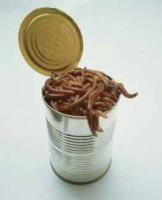My favourite "fascinating fact": -
When someone says "saturated fat" what image springs into your mind? A great big white block of lard? Uggh!
Lard contains:
45% monounsaturated fat;
39% saturated fat, of which 35% is stearic acid;
16% polyunsaturated fat.
(figures above from the USA national nutritional database: www.nal.usda.gov )
Okay, that's 39% saturated fat: but it's not that simple.
Stearic acid metabolises to oleic acid - which raises HDL and lowers LDL simultaneously;
Saturated fats raise both;
Polyunsaturated lowers LDL; no meaningful affect on HDL.
The above is from Mattson & Grundy 1985: Mattson, F H and Grundy S M 'Comparison of Effects of Dietary Saturated, Monounsaturated and olyunsaturated Fatty Acids on Plasma Lipids and Lipoproteins in Man' Journal of Lipid Research Feb 1985; 26(2): 194-202. This research is 27 years old and may have been completely reversed by now, of course!
Just to pop the cherry on the icing of confusion, olive oil contains 16% saturated fat! :shock: but I'm pretty sure this is in the form of oleic acid.
The fat of the human animal contains saturated fat; breast milk ditto. We lived for a very long time without processing food much beyond cooking or drying (or freezing in cold latitudes). We didn't know how to process oils from seeds and fruit (eg olives), so we would be eating mammal fat, fats from river- and sea-fish, and fruits, nuts and seeds mostly in season only, though some of those store well and others can be dried. This was the situation, at least in northern latitudes, as little as 12,000 years ago.
For me personally, eating fat in my diet, much of which is saturated, does not raise my blood lipids; in fact it improves them. If I add in too much carbohydrate, particularly from grains, and keep the fats high - disaster!
We are all different; the best diet for me is one which contains fresh, unprocessed, organic (when I can afford it) food, incorporating all food groups in different quantities but obtaining my few carbohydrates from fresh above-ground vegetables. This may well not suit everyone, but it suits me!
Sorry, Ladybird - I've strayed around the topic a bit. As to how we got to this point - maybe the early scientists analysed the content of both blood lipids and artherosclerotic (?? sp.) plaques, and put two and two together. Both contain saturated fat, therefore the first is responsible for the second, QED. All it needs is for that to become 'accepted' rather than queried for it to become a fact. Add in a good helping of the media misunderstanding press releases, and here we are!
Just my opinion, of course; therefore worthless. What do I know? :wink: A little knowledge is a dangerous thing.
Viv 8)


